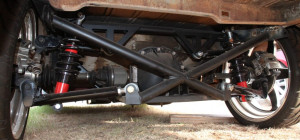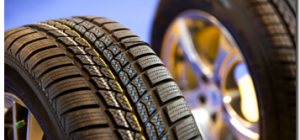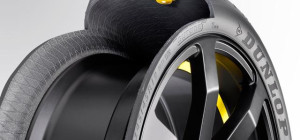
Rallying is a motorsport with a fairly long history, and unlike some other forms of motorsports it is accessible to common folk who want to get into it as kind of a hobby. Whether you just want to have some fun on a dirt track every once in a while, or you really want to give rallying a try, it's best to start off slowly so you can get a hang of things.
While there is a lot you'll have to learn about rally driving and car maintenance, there are a few important things you should consider before anything else - you'll need to make sure that your car is really ready. Let's go over the basic things you'll need to cover when building your first rally car.
- Find a decent used car

You can do a lot to a car to make it perform better, but some cars just weren’t built with racing performance in mind. It's best to look for tried and true models, ones that have commonly been used in rallying over the decades. An old beat up car that has decent characteristics can actually be turned into a good rally car that outperforms some of the five figure professional racing machines. Look for the right car and be prepared to invest some time and effort into it.
- Protecting the underside of your car

One of the biggest problems when driving off road or on dirt tracks is that the underside of your car can get beat up pretty bad, and that's a fairly big deal because there are tons of different parts down there that aren't made to withstand a huge amount of force. Adding skid plates, which are essentially relatively thick metal plates, will ensure that all the more fragile parts are well-protected during a race.
- Roll cage

While we're on the subject of safety, it's important to note that no matter how good of a driver you are, you are bound to slip up sometimes and end up in a ditch or have the car roll over, it's just a risk that goes with the territory. This is why you need a sturdy roll cage. In fact, it should be one of the first adjustments you make to the car. You shouldn’t really skimp on safety equipment, so be sure to put a good part of your available budget into making a car that can survive some very rough use. If you're a bit of a DIY enthusiast, and have some experience with metalwork, you can make the roll cage yourself or you can try to find a good shop and pay to have it made.
- Suspension

Driving on dirt or gravel is a whole lot different than driving on pavement, and in order to be able to drive your car safely and effectively on different surfaces, it will require some modifications. For example, right off the bat you'll notice that the ride is much bumpier and incredibly rough on both the car and its passengers. Unless you enjoy having herniated discs, it's a good idea to install some proper suspension. You really need something to help absorb all the shock that is put on the car. Stiffer and taller coils and a larger front sway bar are just some of the components that need to be installed, and you should also definitely consider ceramic brake pads.
- Tires

Tires are there to provide optimal traction and make sure that most of the power generated by the engine is transferred as efficiently as possible to the road. You want a relatively high and wide tire, compared to the ones that come with stock car models, which will allow for a decent amount of ground clearance and provide you with a wider surface that grips the ground better. There are also special tires that are designed specifically for mud or snow, and you might need these depending on the conditions you will be driving in.
- Battery

In a normal car the battery sits in place just fine on its own, even during some fast and exciting riding. However, we come again to the point about the potential for rougher terrain to wreak havoc on your vehicle. All the bumping and bouncing that goes on during a rally race tends to make the battery shift around to the point where it can come loose and cause a serious problem. This is why you need to make sure that it is tied down firmly into place using zip ties, bungee cords or ratchet straps. Covering the battery with rubber or several layers of duct tape so that it doesn’t come in direct contact with any metal parts or tools is also a good idea.
- Drivetrain

The most important thing for a rally car, in terms of power output, is the ability to produce great amounts of acceleration within the low-to-mid rpm range. You need all the torque you can get, and you don't have the time or the space to keep your engine revved up. With that in mind, the most important items on your shopping list should be a performance chip to boost acceleration, a better intake manifold that provides plenty of torque in the lower rpm ranges and a decent header, which will give you some extra horsepower to work with.
- Seats and seat-belts
A racing seat has one main purpose - to keep you firmly rooted in place. This ensures your safety and allows you to focus on driving instead of holding on for dear life. These special seats are to be used in conjunction with a 4-point or, preferably, a 5-point safety harness, which ensures that you don't get knocked all over or fly forward in the event of a crash. Try to find the best seat and harness combo within the price range you are comfortable with.
When all’s said and done, turning a regular car into a rally car is not exactly a weekend project, but it doesn’t have to be that expensive either. You'll have to choose the equipment based on how serious you are about rallying and what your budget will allow, but at least make sure that you’ve got these eight points covered.









Thanks very much for the tips